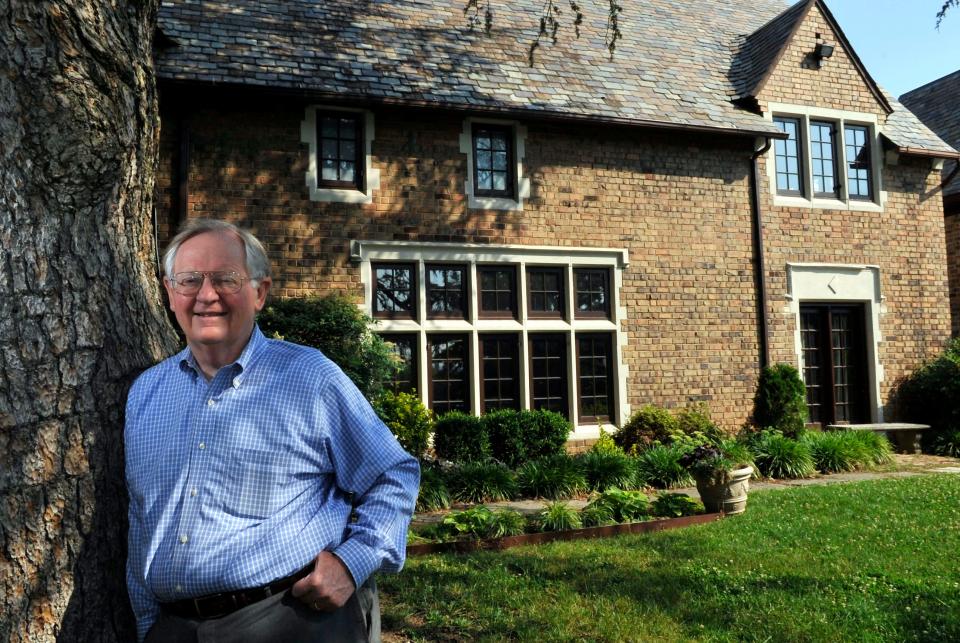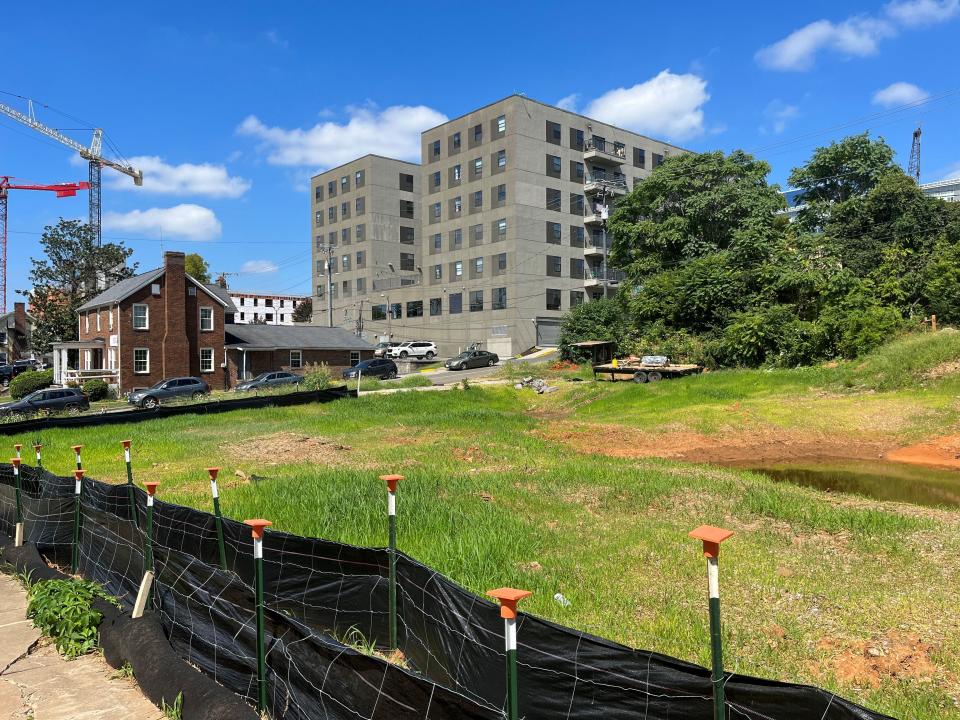Construction near University of Tennessee campus claims homes with ties to two mayors
- Oops!Something went wrong.Please try again later.
Some recent razings of four old homes along the 1900 block of Lake Avenue behind the Cumberland Avenue Panera are typical of the construction taking place in the area with independent housing and University of Tennessee projects.
But two of the homes that had been there until recently had connections to two families whose children would do their own building up of Knoxville while mayors.
According to some old city directories on file at the McClung Historical Collection downtown, the home at 1911 Lake Ave. was lived in for a period beginning in the 1920s by lawyer B.H. Testerman, the father of future Knoxville Mayor Kyle Testerman.
And the home at 1915 Lake Ave., two doors down at the corner, was where future Mayor Victor Ashe lived briefly as an infant in the mid-1940s before his family moved up to 1811 Melrose Ave. in a structure now used as the UT Baptist Collegiate Ministry center.

The homes, which were torn down as part of a project involving the construction of an independent student housing facility that includes the Panera site, were two-story brick structures from about the 1920s and featured the architectural style of that era.
Some old trees along the street there have also been taken down under the direction of the developer, Core Spaces of Chicago.
“Sad to learn about it. (It’s) a shame,” Ashe said upon hearing his old home had been razed.
Still around in this rapidly redeveloping area, however, is the sloping Mountcastle Park, which is now owned by UT as protected green space but had been part of that area when it was strictly residential.
According to some information at the Volopedia website by Betsey Creekmore, UT beginning in the 1970s started helping take care of the park and planned improvements with the city of Knoxville. Under the city administration of – yes – Mayor Ashe, it was later given to UT with the stipulation that it be maintained as a park.
Ashe, also a Shopper News columnist, said that area around the park and where the houses have been torn down was once a very desired area of town in which to live.
“In the 1920s, ‘30s and ‘40s, it was very popular,” he said, adding that a movie theater and drugstore were on Cumberland Avenue along with other residences, and several schools were nearby, including Staub Elementary, where he attended.
He added that several well-known Knoxville leaders came from that neighborhood, including Arthur Seymour Jr., Bo Shafer, Kyle Testerman and others. UT football coach Robert Neyland also lived in a house at nearby Terrace Avenue early in his UT coaching career. It was taken down in recent years.
A glance at some old city directories shows that perhaps three now-razed homes in the 1700 block of Lake Avenue from before World War I were the first homes in the area, with most others built during the 1920s period.
Of three of the structures recently razed, the 1925 directory says B.H. Testerman lived at 1911 Lake Ave. at that time, railway baggage agent A.J. Rothermel was at 1913 Lake Ave., and home builder H.A. Schubert was at 1915 Lake Ave. When Mayor Ashe’s father, Robert Ashe, settled at 1915 Lake Ave. around the early 1940s, he was a cost clerk with Standard Knitting Mills.
The Ashe home, which was used for a church ministry in recent years, had a vintage covered carport and pear tree along Mountcastle Street.
The city directory from 1950, when the area had been developed for years but construction pressures from other entities like UT had not yet arrived, shows nearly 60 homes on Lake Avenue from the 1500 to the 2200 block, and 35 on Terrace Avenue in that same stretch. Well-known residents that year included artist Russell Briscoe at 2111 Terrace Ave. and architect A.B. Baumann Jr. at 1806 Lake Ave.

A look today shows only about a dozen of these 1920s-era homes remaining along the Lake and Terrace Avenue corridors, with many of the remaining few used by UT or affiliated organizations like church ministries. A mere handful are still believed to be privately owned, or at least have been in recent years.
Ashe said he laments the changes that have come to his old residential neighborhood as well as the Strip on Cumberland Avenue. He added that the latter will offer a not-so-great driving experience almost like going through a canyon with the additional tall apartment buildings scheduled to be built.
But the view he has of his childhood neighborhood remains unobstructed and pleasant in his mind.
“When I was growing up, it was residential,” he said of the entire area, including south of his Melrose Place home. “You had Circle Park and the stadium, but you still had Yale Avenue, Detroit Avenue, Rose Avenue, Lake Avenue and Terrace Avenue. It was a normal residential neighborhood.”
This article originally appeared on Knoxville News Sentinel: Knoxville historic homes near University of Tennessee campus razed

